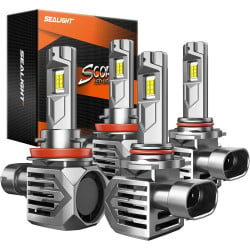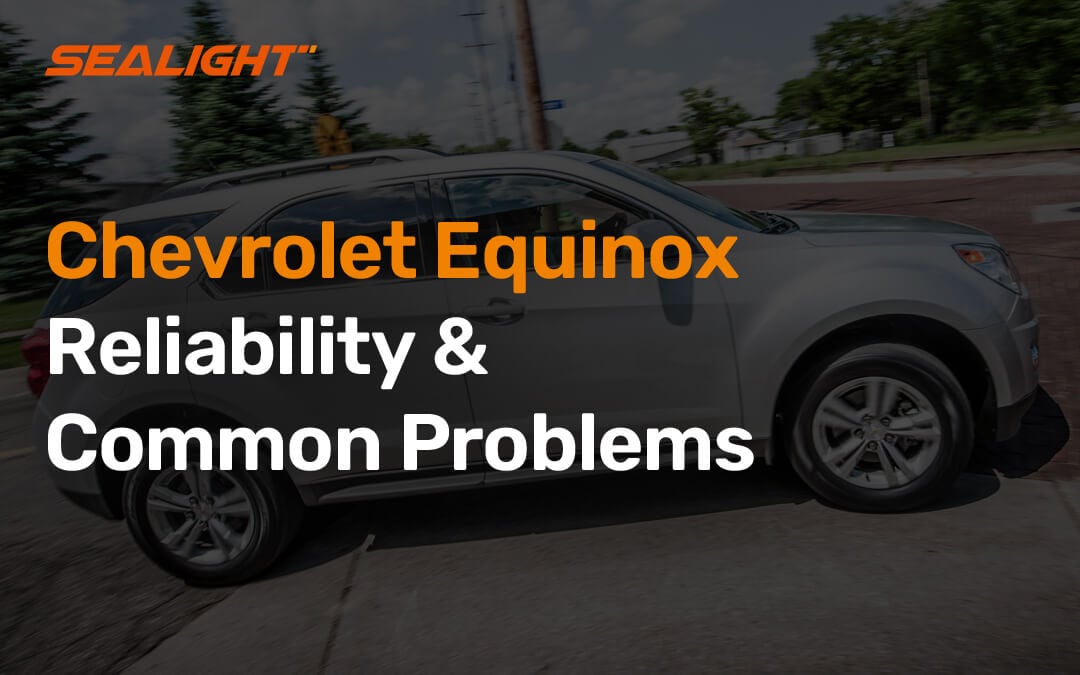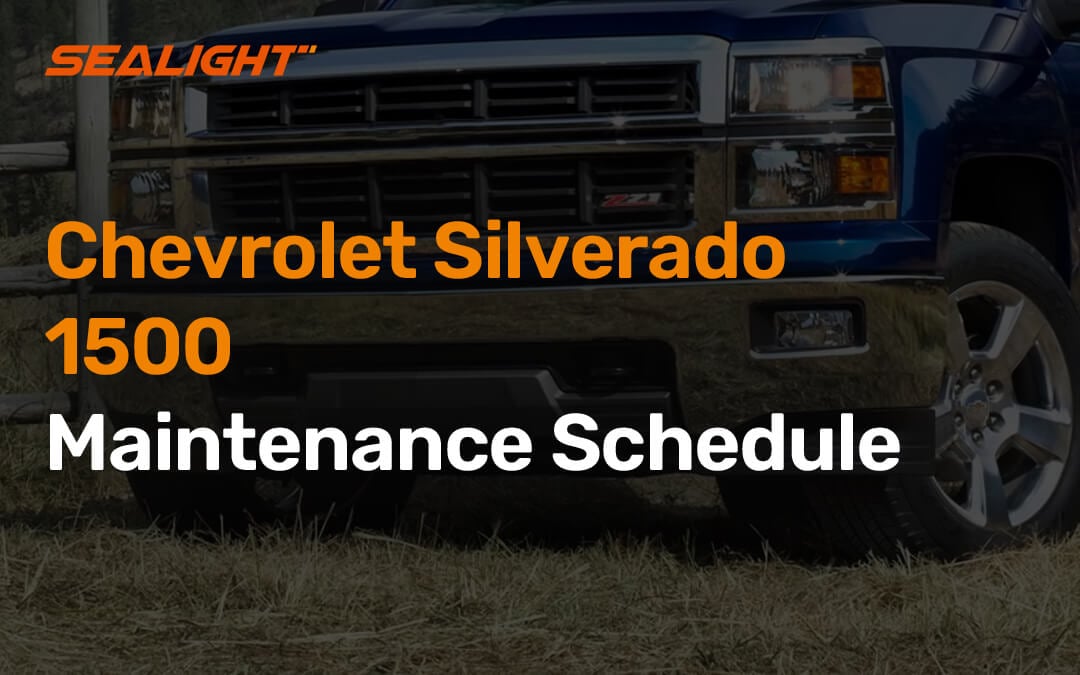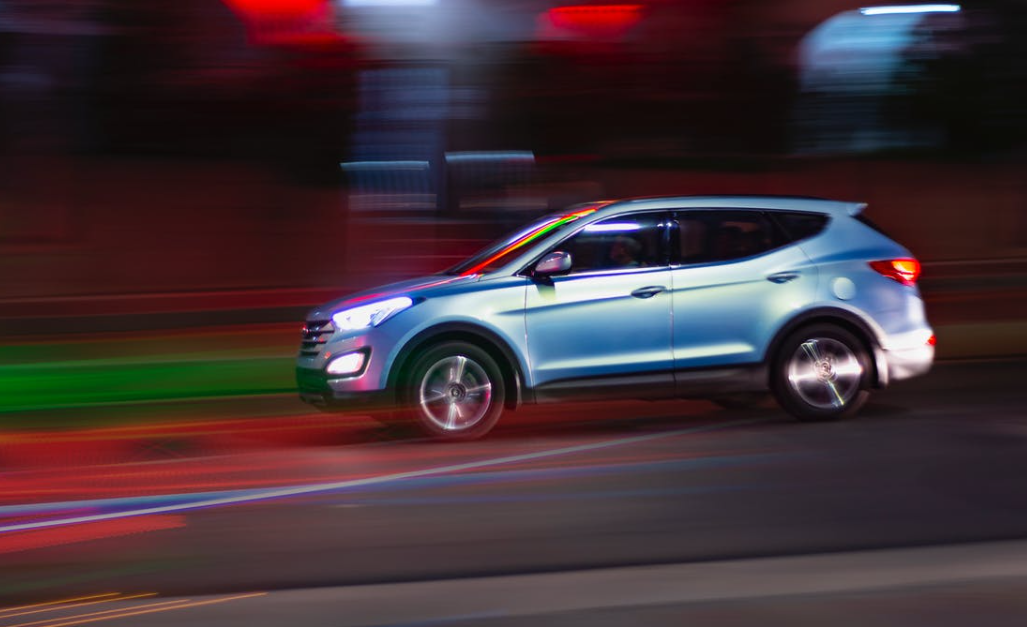The Chevrolet Tahoe has built a strong reputation as one of America’s most capable and versatile full-size SUVs. Known for its space, towing strength, and road presence, it remains a favorite among families, outdoor travelers, and even law-enforcement fleets. But like any long-running model, its performance and ownership experience can vary depending on the year and mileage.
If you're researching Chevrolet Tahoe reliability, you’ll find that certain generations perform better than others, and some issues tend to appear more frequently as these SUVs age. From engine and transmission concerns to electrical faults and interior wear, understanding the most reported Chevrolet Tahoe common problems can help you choose the right model—or maintain the one you already own.
Lighting issues aren’t the most widespread, but they do appear in older Tahoes, especially when factory halogen bulbs begin to dim or fail. If you’re experiencing poor nighttime visibility, a Chevrolet Tahoe LED bulbs upgrade can be an easy and effective improvement.

How Reliable Is The Chevrolet Tahoe?
RepairPal rates the Chevrolet Tahoe a solid 3.5 out of 5, placing it above average among full-size SUVs. According to their data, Tahoe owners spend about $744 per year on repairs and maintenance—reasonable for a large SUV. It also doesn’t require frequent trips to the shop: the average owner visits a mechanic 0.3 times per year, slightly better than the 0.4 average for midsize-to-full-size SUVs. And when repairs do happen, only about 16% are considered severe, which is lower than many competitors.
J.D. Power’s reliability scores paint a similar picture. Most model years land in the high 70s to low 80s out of 100 in the Quality & Reliability category, with standout years commonly scoring 80 or above. A few years, such as 2015, 2019, and 2022, scored in the upper-70s—still respectable, but not at the very top of the category. Overall, the Tahoe performs consistently well, especially considering its size and capability.
Resale value is where owners may feel the pinch. According to industry resale data, the Tahoe loses about 53% of its value over five years, which is typical for large SUVs but a bit higher than some midsize crossovers. In simple terms: if you plan to sell it in a few years, expect noticeable depreciation.
But if you’re buying with long-term ownership in mind, the Tahoe delivers. With strong reliability scores, manageable maintenance costs, and rugged durability, it's one of the most dependable full-size SUVs you can stick with for the long haul.
8 Common Problems in Chevrolet Tahoe Models
If you're buying a used Tahoe—or want to keep your current one in good shape—understanding these common problems can help you make better decisions on maintenance and repairs.
A/C Stops Working (Especially 2015–2017)
Tahoe owners from the 2015–2017 model years frequently report that the A/C suddenly stops blowing cold air. This is usually caused by a cracked A/C condenser, which leads to refrigerant leaks. Other components can occasionally fail (compressor, evaporator), but the condenser is by far the most widespread issue and doesn’t require replacing the entire A/C system.
How to Fix: Replace the A/C condenser: $900–$1,100
Excessive Oil Consumption (Common in Older Models)
Earlier model Tahoes—especially the 2007–2011 generation equipped with GM’s 5.3L V8 and Active Fuel Management (AFM)—are known for high oil consumption. In severe cases, worn piston rings can lead to loss of compression, misfires, and reduced engine performance.
How to Fix: Rebuild or replace engine: $2,000–$5,500+ (depending on engine and labor)
4WD Selector / Transfer Case Switch Failure
Many Tahoes built before 2016 experience problems with the 4WD selector switch or transfer-case encoder motor. Symptoms include the “Service 4WD” warning light, inability to switch between 2WD/4WD modes, or the system being stuck in one range. Causes vary from worn switches to a failing position sensor.
Typical Repair Cost: Around $500–$800+ depending on the faulty component
A/C System Actuator (Blend Door) Failure
HVAC blend-door actuators commonly fail in Tahoe models built before 2017. When this happens, the air may randomly switch between hot and cold, blow from the wrong vents, or make clicking noises behind the dashboard.
Quick Fix: Replace HVAC actuator: $150–$200 + labor
Front ABS Speed Sensor or ABS Module Problems
Older Tahoe models—particularly those built before 2012—can suffer from failing front wheel speed sensors or corrosion around the hub assembly that throws off sensor readings. This leads to ABS warning lights and reduced ABS performance. Some owners also report ABS control module failures.
Typical Fix:
Replace speed sensor or hub assembly: $150–$300
(ABS module replacement can cost more)
Instrument Panel / Gauge Cluster Failure (2001–2008)
Tahoes from 2001–2008 are known for failing instrument cluster stepper motors, which control the speedometer, tachometer, fuel gauge, and other displays. Owners report erratic readings, frozen gauges, or complete cluster failure.
How to Fix: Send cluster for professional rebuild or replacement: $600–$900
Power Door Lock Actuator Failure
Across many Tahoe model years (not just pre-2016), power door lock actuators tend to wear out. Symptoms include slow, inconsistent, or completely non-functional power locks. Because each door has its own actuator, repairs depend on which doors are affected.
How to Fix: Replace door lock actuator(s): $300–$500 per door
Dashboard Cracking (2007–2014)
A very common complaint on 2007–2014 Tahoe models is dashboard cracking, especially near the passenger airbag and above the instrument cluster. It’s mostly a cosmetic issue but can affect resale value and interior appearance.
Repair Options: Dashboard replacement or reinforced cover: $250–$1,000+ depending on method
Real-World Chevrolet Tahoe Headlight & Fog Light Problems
Many Chevrolet Equinox owners report problems with premature halogen bulb burnout, dim output, or inconsistent brightness—especially on higher-mileage models. These issues typically appear due to aging wiring, voltage fluctuations, or the natural wear of traditional halogen bulbs.
Because the Equinox relies heavily on proper forward visibility and signal illumination for safe daily driving, dim or frequently failing bulbs can noticeably reduce nighttime visibility.
Recommended Fix:
Instead of repeatedly replacing halogen bulbs, many drivers upgrade to SEALIGHT LED bulbs for Chevrolet Tahoe , which provide:
Brighter, whiter illumination for clearer nighttime visibility
Longer lifespan, reducing the need for frequent replacements
Better beam focus with SEALIGHT’s 1:1 halogen-to-LED optical alignment
Quick plug-and-play installation for most trims
This upgrade is one of the easiest ways to improve daily safety and driving comfort.
Popular options:
Worst Chevrolet Tahoe Model Years to Avoid
2001–2003 Tahoe
Common Issues: Fuel pump failures, transmission problems (rough or delayed shifting), and electrical issues including instrument cluster glitches.
These early-generation Tahoes can require costly repairs as mileage climbs, especially for the fuel and transmission systems.
2007–2009 Tahoe
Common Issues: Excessive oil consumption (particularly in AFM-equipped V8 engines), occasional transmission concerns. High oil usage can lead to engine wear if not monitored, and transmission problems, while less common, can be expensive to fix.
2015 Tahoe
Common Issues: A/C condenser leaks, power steering module faults, and low-voltage electrical warnings.
These issues are supported by recall data and owner reports, making 2015 a model year with above-average maintenance risk.
2021 Tahoe
Common Issues: Engine recall for 6.2L V8 connecting rod/crankshaft defects, fuel pump control module recall (potential engine stall), and steering control module issues.
Multiple recalls and mechanical defects make 2021 a higher-risk year without thorough inspection.
Note: Some previously cited problems—like door lock actuator failures in 2007–2009 or “general poor build quality” for 2021—are anecdotal or subjective. The list above focuses on documented mechanical, electrical, and recall-related problems.
Best Chevrolet Tahoe Model Years to Buy
If you want a Tahoe with fewer reported issues and better reliability, consider these years:
2011–2014 Tahoe: These model years are known for stable transmission performance and fewer major electrical problems.
2018–2020 Tahoe: Most issues from previous generations were addressed, and these models offer modern tech features and improved overall reliability.
2022–2023 Tahoe: Early issues in this generation were largely resolved, interior quality improved, and ride comfort is generally better than prior model years.
Tip: Even for “best” years, always check the vehicle’s maintenance history and recall status before purchasing, as individual examples can vary.
Final Words
The Chevrolet Tahoe remains a top choice in the mid-size SUV segment thanks to its strong reliability, attractive design, and relatively low average yearly repair costs. It’s a vehicle that can be enjoyed for years with minimal worry about major mechanical problems.
Still, it’s always helpful to know the common issues that may arise. Being aware means you can address problems quickly and keep your Tahoe running safely and smoothly. And for an added layer of confidence, upgrading your Chevrolet Tahoe’s light bulbs to SEALIGHT LEDs ensures brighter, more reliable nighttime visibility, so driving after dark is safer and stress-free.
References:
https://www.startmycar.com/chevrolet/tahoe/problems/lights
https://www.facebook.com/groups/763009848007642/posts/1543039693337983/
https://www.justanswer.com/chevy/mqita-passenger-side-hid-head-light-will-not-replace.html
https://www.tahoeyukonforum.com/threads/fog-light-and-head-light-issues.93355/














Leave a comment